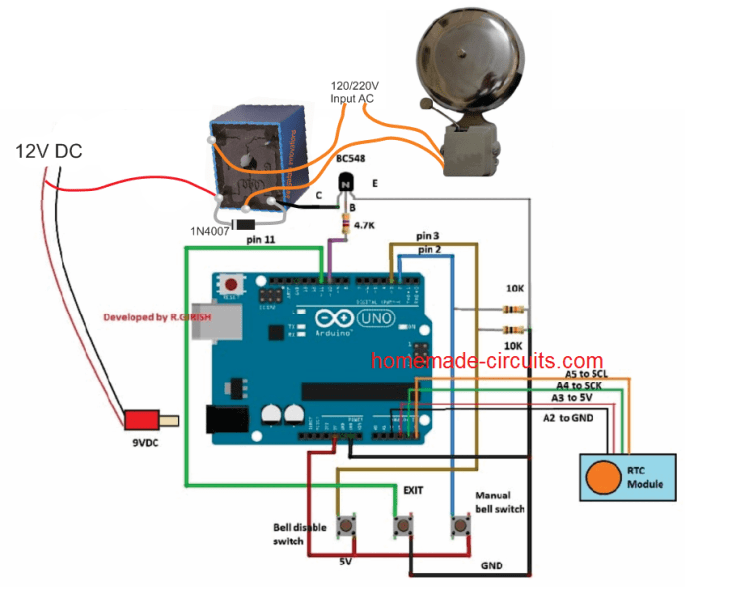Automatic Bell Project: An Innovative Approach to Time-Based Automation


In today’s fast-paced world, automation has become essential to simplify repetitive tasks. One such practical and impactful application is the Automatic Bell Project — a system designed to ring a bell automatically at scheduled times without human intervention. Widely useful in schools, factories, and offices, this project ensures accuracy, consistency, and ease of operation.
Core Components
The Automatic Bell System typically consists of the following key components:
- Microcontroller: A programmable controller like Arduino, PIC, or even ESP32 acts as the brain of the system, executing the programmed schedules.
- Real-Time Clock (RTC) Module: Modules like the DS1307 or DS3231 keep accurate track of the current time, even during power outages (thanks to their small coin cell batteries).
- Relay Circuit: Relays act as electronic switches that control the bell. When the microcontroller triggers the relay, it activates the bell.
- Display Interface: LCDs or OLED screens display the current time and allow users to easily set or edit the ringing schedules.
- Programming Interface: Simple button inputs or more sophisticated touchscreen interfaces help users program and update bell schedules.
How the System Works
At its heart, the project is simple but very effective:
- Time Tracking: The RTC module continuously keeps track of real-world time.
- Schedule Matching: The microcontroller constantly compares the real-time data with the pre-programmed schedule.
- Bell Activation: When the current time matches a scheduled event, the microcontroller sends a signal to the relay module.
- Ring the Bell: The relay triggers the connected electric bell for a predefined duration (e.g., 5–10 seconds).
Advanced systems can even differentiate between weekdays and weekends, allowing different schedules on different days.
Advanced Features
With some extra effort, the Automatic Bell System can be upgraded with impressive features:
- Remote Control: Using Bluetooth or Wi-Fi modules (like ESP32 or HC-05), the system can be controlled and programmed via a mobile app.
- Battery Backup: A small battery ensures that schedules are not lost during a power failure.
- Customizable Schedules: Users can easily program different ringing times for different days (perfect for holidays, weekends, and special events).
- Voice Alerts: Integration of a speaker system can provide voice announcements along with the bell.
- Security and Logging: Advanced versions can log all bell events for monitoring and review.
Practical Applications
- Schools and Colleges: Automating class change bells, assembly start times, and exam breaks.
- Factories: Indicating shift changes, lunch breaks, and work pauses.
- Religious Places: Managing prayer time bells.
- Offices: Automating meeting reminders or start/end of day signals.
Example Block Diagram
Here’s a simple block diagram for clarity:
cssCopyEdit[ RTC Module ] → [ Microcontroller (Arduino/PIC) ] → [ Relay Module ] → [ Bell ]
↓
[ Display (LCD/OLED) ]
↓
[ Buttons / Mobile App ]
Conclusion
The Automatic Bell Project is an excellent blend of hardware and software, making it a perfect project for electronics enthusiasts, engineering students, and institutions looking for practical automation solutions. With endless possibilities for expansion and customization, this project beautifully demonstrates how simple electronics can significantly impact daily life!
